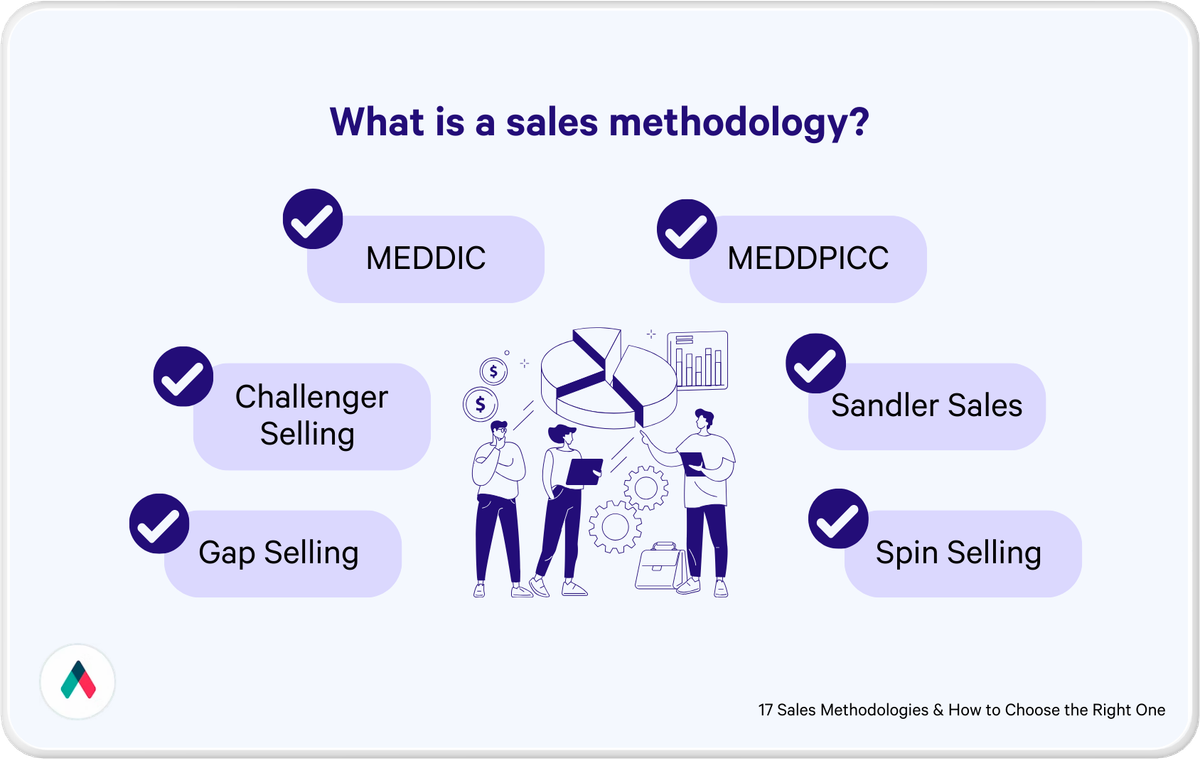Imagine captivating even the most critical CFO with your sales approach. That's the power of value selling, focusing on tangible benefits like cost savings and efficiency. With corporate budgets tightening, articulating value is not just preferred—it's demanded. Yet, a scant 10% of sales reps are value-focused, leaving a 'value gap' that threatens deal closure and pricing.
How does value selling differ from traditional feature-led pitches? We'll dissect the value-based framework and guide you through this essential shift.
What is Value-Based Selling?
Value-based selling hinges on showcasing how a product or service delivers measurable benefits, not just its features. It’s a strategic approach where every interaction aims to underscore the unique value proposition to the customer.
Brands like Apple and Salesforce command premium prices because they've mastered this approach, conveying a sense of value and quality that justifies their pricing. By focusing on the distinct advantages customers gain, any brand can elevate their offering beyond just a transaction, turning products into valuable solutions. With dedication and insight, mastering value-based selling is within any salesperson's reach.
Opening up the value conversation
To get started, you need to understand the challenge or business pain your prospective client needs to solve.
If your prospect is like most buyers, they have already done a lot of preliminary research on you and your competitors or anyone who might be able to solve their challenge. In fact, according to Gartner research, buyers may be halfway through their purchasing decision before engaging with a salesperson. Some sources say buyers may be as much as 70% of the way through making a decision before contacting a sales professional.
What does this mean? Your buyer has probably already combed your website, reviewed any content or case studies your company has published, and read all of the reviews on your product or service. They now feel ready to come to you for more details as to how you can help solve their specific need.
Leveraging your discovery call to learn where you can add value
During your discovery call, ask specific questions to gain insight into your buyer’s specific pain points, challenges, or goals that they want your solution to help with. This information then becomes the foundation for presenting the value of your product or service.
If you want to be seen more as a trusted advisor than a sales rep, you’ll need to do a little research before you have this initial call. It’s helpful to understand what is going on in your prospective buyer’s industry and even within their company.
How do you find this information if you’re new to their industry or don’t know the company yet? Google News, LinkedIn, and even social media can help. A few minutes of focused research can yield a lot of information to help you start a great conversation and build trust.
You’ll want to ask questions and listen carefully to what your prospect says (and what they don’t). This language can help you tailor your solution and your proposal to create the best value proposition for your buyer.
Some of our favorite discovery call questions to open up the value conversation during discovery include:
- Can you tell me about your [or your team’s] current process for X?
- Why do you do X this way? Is it working well, or are there opportunities for improvement?
- How much time have you spent doing X this way?
- How much budget do you have assigned to X?
- How much of an impact does X have on your business?
- Are you able to change how you do X? If so, what would that process look like?
How many questions do you need for your call? Research from Gong shows that sales reps should be asking 11-14 questions in a discovery call. Too many questions, and you risk having your prospect feel like they’re being grilled. Not enough questions, and you won’t have the information you need in order to craft a winning sales proposal.
You may want to ask a few open-ended questions to start and see what direction your prospect takes the discussion, as they may bring up topics and pain points you haven’t thought to ask about.
Value Selling Framework
1. Define your unique selling proposition (USP)
Your unique selling proposition may vary from client to client. It’s about what your product or service can do for them. A good USP solves a problem or business pain point in a way other solutions can’t. For example, if you sell project management software, your USP may be that you can save a project manager four hours per week of administrative time. This time can be better utilized by collaborating with clients and the internal team or helping business development understand the team's capacity for new work. You’ll notice that we didn’t talk at all about the product’s design, features, or even how it works - just what the result will be for the buyer.
In the early stages of the buying journey, your decision-makers may be overwhelmed by researching different products or solutions. It can get to the point where all of the solutions sound and feel the same. In that case, they may be tempted to choose the product with the lowest price. And this is where a good USP comes in. It can help you stand out from the competition and be a point of differentiation.
2. Tailor your pitch, don’t rush it!
While early in your sales training, you might have heard about how important it is to ask for the sale quickly - in value-based selling, you don’t want to rush to get to the pitch. It might take a few sales conversations before you even get there. The cadence for these conversations will be highly dependent on your client’s needs and timeline.
It may take many follow-ups and touchpoints across a sales cycle before you actually ask for the sale. Each of these touchpoints should highlight the value your product or service brings without making an aggressive sales pitch. By the time you actually do make the pitch, your prospect should already know, like, and trust what you’re saying - and this takes time.
Instead of pitching your product or service and the corresponding pricing, you’re really going to be pitching the impact you’ll have on your customer’s business and how long it will take them to see a return on their investment. For example, if your potential customer is an office manager for a busy medical practice and your product is an HR tool that helps manage clocking in and out, payroll, and vacation requests - that’s not exactly what you’re selling - you’re selling them on the idea of more data that is easier to interpret and action against.
You’re selling the dashboard that they can log into from anywhere and see what their staffing levels will be like for the next two weeks and the number of callouts that happened over the last month!
Now, if you also need to take this pitch to the CEO, you’re also telling them about how much more time their office manager will have to work on employee engagement initiatives and how each employee will save 5 minutes a day signing in and out and 10 minutes putting in vacation requests and getting them approved.
For more examples and advice on tailoring a pitch to highlight the value of your unique product or service look at, The Challenger Sale by Matt Dixon and Brent Adamson and the sales methodology that came from their book and research. We also have a guide on the Challenger sales methodology.
3. Focus on building relationships.
When using a value-based selling approach, relationships are critical. You’ll want to build in time to focus on your customers and the relationship you have with them. This may mean having notes in your CRM about their birthdays and families and even sending cards or a small token to celebrate a life event or milestone in your customer’s career.
You will want to maintain these relationships as possible when the initial deal is done. This can help with contract negotiations or give you the opportunity to upsell in the future. You want this to feel natural and not like you’re just coming to this client when you want to sell them something.
Once the deal is done, consider adding another task in your CRM to check in quarterly, annually, or whatever cadence feels most appropriate for your relationship. You can keep up with sending birthday wishes and recognizing work anniversaries or promotions too to improve customer experience even further.
4. Be an expert in your product or service.
This part of the framework is generally considered table stakes for being a good salesperson. You’ll want to make sure you know your product or service inside and out. What can it do? How does it work? Who is the right organization to use it? How is it implemented, and what maintenance should a customer expect to need?
While you won’t necessarily be selling features and benefits, without this knowledge, you won’t be able to create the value-based messaging you need to close more deals and see the sales success you want.
If your company has a customer success or customer support team, consider sitting in on some of their calls with current customers. Hear what is on their minds and how they talk about their work and your product. Mirror some of this language in your sales conversations and proposals to help communicate your product or service’s value.
Value Selling Examples
After establishing the framework for value selling, let's examine it in action with some B2B examples. These scenarios will illustrate how value selling can manifest in real-life business situations.
Example 1: Cybersecurity Software
A cybersecurity firm approaches a potential client who has recently experienced a breach. Instead of focusing on the features of their software, the sales rep emphasizes the value proposition: the software predicts and neutralizes threats before they impact business operations, potentially saving the client millions in lost revenue and reputation damage.
They provide a data-backed report showing how similar businesses saw a 40% reduction in security incidents within the first quarter post-implementation.
Example 2: HR Management Platform
A company selling an HR management platform to a manufacturing business highlights how their software streamlines employee onboarding and training.
This directly addresses the client’s high turnover rates and associated costs. The salesperson demonstrates that, by reducing the time-to-productivity for new employees by 25%, the client could redirect resources to improve retention strategies and boost overall productivity.
Example 3: Supply Chain Management Solution
In selling a supply chain management solution, the sales team identifies that their prospect, a mid-sized retailer, struggles with inventory surpluses and shortages.
They illustrate how their system’s predictive analytics could optimize stock levels, cutting down inventory costs by 30% and reducing lost sales due to stockouts by 15%. They showcase a case study where similar solutions have led to better customer satisfaction and increased sales.
Each of these examples provides a clear picture of how the value-based selling approach directly aligns a product’s benefits with the customer’s specific business needs, leading to a more impactful sales conversation.
Getting started with value-based selling
Now that you understand what value-based selling is and the benefits it can bring to your organization (and sales career). You might want to understand how to get started and apply a value-based sales framework to your next set of deals.
1. Shift your mindset to think about value first.
As we discussed earlier, many products or services could work similarly to yours. Customers may have several solid choices in highly competitive industries like SaaS, insurance, or managed services.
In these situations, being able to deliver is just table stakes. Any of your competitors may be able to provide the same or a similar solution, so what you need to address here is the value that you and your organization uniquely bring to the table.
Is it a dedicated customer support professional, better onboarding and education, or even just the opportunity to work with YOU and your team? Whatever makes your deal unique, that’s what you want to highlight. And here’s the hard part, you may also need to quantify how your differentiator may impact your customer’s bottom line.
Is working with your competitor costing them more money? Can you save them time and resources in setting up a new platform? These things will ensure that even the CFO enthusiastically tells your customer to sign on the dotted line (or even better - accept a Qwilr online proposal!).
2. Become a trusted advisor, not just another salesperson.
If your potential customer is actively seeking a new solution, they’re likely meeting with a number of salespeople as part of the process. This is where you can use the value-selling methodology to stand out. Buyers want sellers who can guide them to make the best decision possible.
The first step in this process is to do your research. Learn everything you can about their industry, their challenges, the company you’re selling to, and where your potential customer sits within that organization. Then, you’ll want to ask good questions to both validate your research and learn more about your prospects’ points of view. You can also learn about what might make this deal a win for your prospect, their boss, and their business.
From this position, you can start to advise. You’ll want to use data and other proof points to tell your story. Data can help you highlight the different types of value your organization can bring to your customer. The proof points you raise will help your prospective customer visualize how you’ve been successful before and how your solution might play out in their organization. These stories will help you build credibility and ultimately trust with your potential customers.
3. Put your focus on your customer - and keep it there.
Buyers want a personalized sales experience and will often dismiss brands that use generic sales pitches. Have you ever had someone connect with you on LinkedIn using one of the really obvious sales templates and rolled your eyes (while blocking them)? That’s what it feels like to your buyer when you send a generic proposal.
This sales strategy doesn’t require you to throw out all of your templates; it’s just a reminder that they’re just that. You need to put yourself in the customer’s shoes and mold those templates into something valuable for them. Think of your proposal template or pitch deck as another framework or outline and add details and customize them (as well as your overall sales process) to create a buyer journey that is unique to this specific customer or deal.
4. Communicate the value and impact you bring to your customers, and watch as requests for deals and discounts disappear.
While the idea of value selling can be a big shift for many sales organizations, it’s worth noting that focusing on value instead of features, benefits, and price creates a strong perception of your product or service. This can help you as a sales rep support your product’s price without being tempted to offer a discount.
By having a differentiator, you may be able to argue that other (less expensive) similar products aren’t even if your league - and therefore, you shouldn’t need to discount your price to remain competitive. Additionally, proving value gives buyers the confidence to commit to signing a purchase agreement.
Looking for a proposal and sales collateral solution that supports your value-selling efforts? Look no further than Qwilr. Create proposals and sales material that demonstrate value and delight your customers and prospects in minutes. Want to learn more? Book a demo.
About the author

Brendan Connaughton|Head of Growth Marketing
Brendan heads up growth marketing and demand generation at Qwilr, overseeing performance marketing, SEO, and lifecycle initiatives. Brendan has been instrumental in developing go-to-market functions for a number of high-growth startups and challenger brands.








